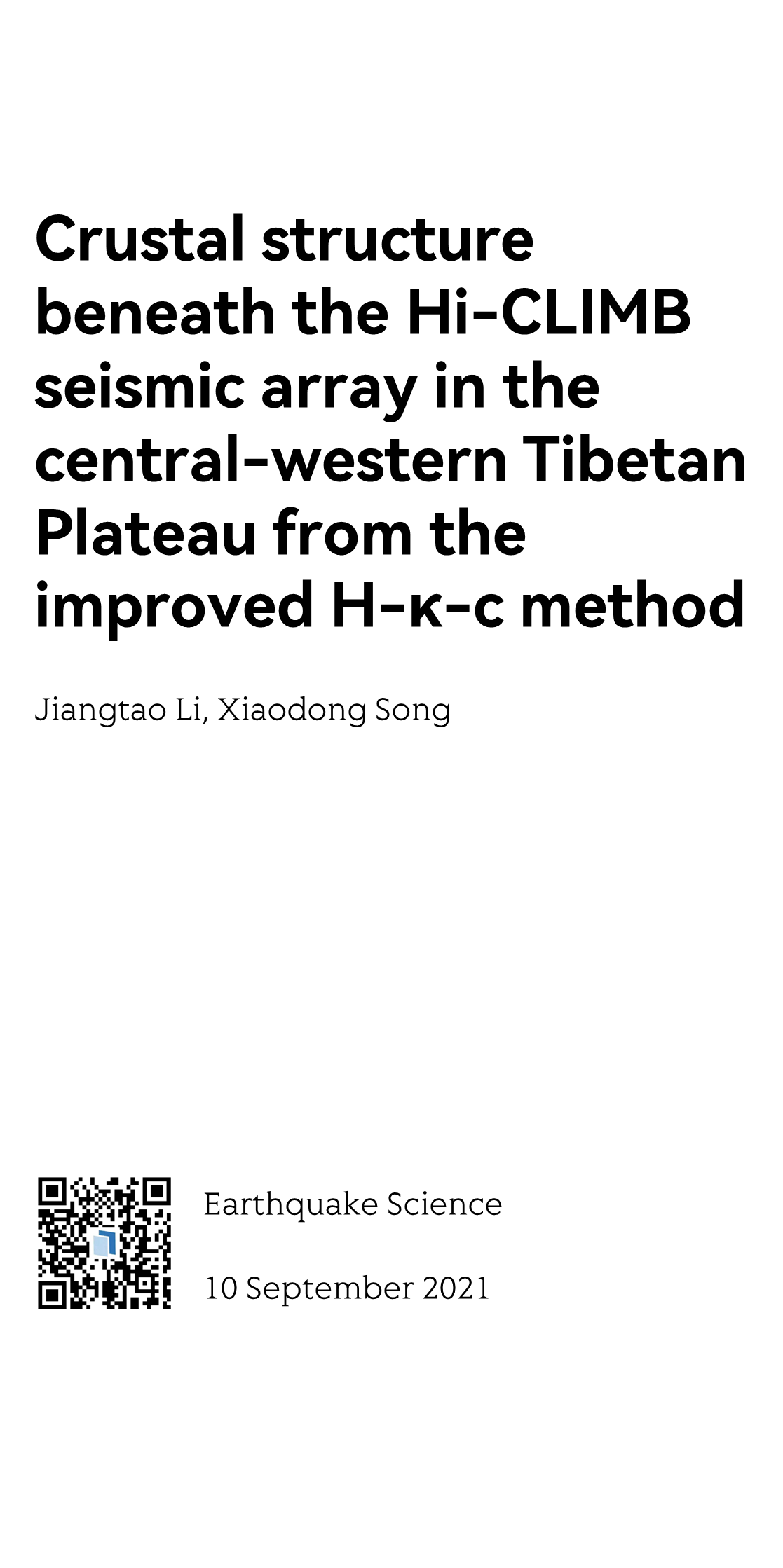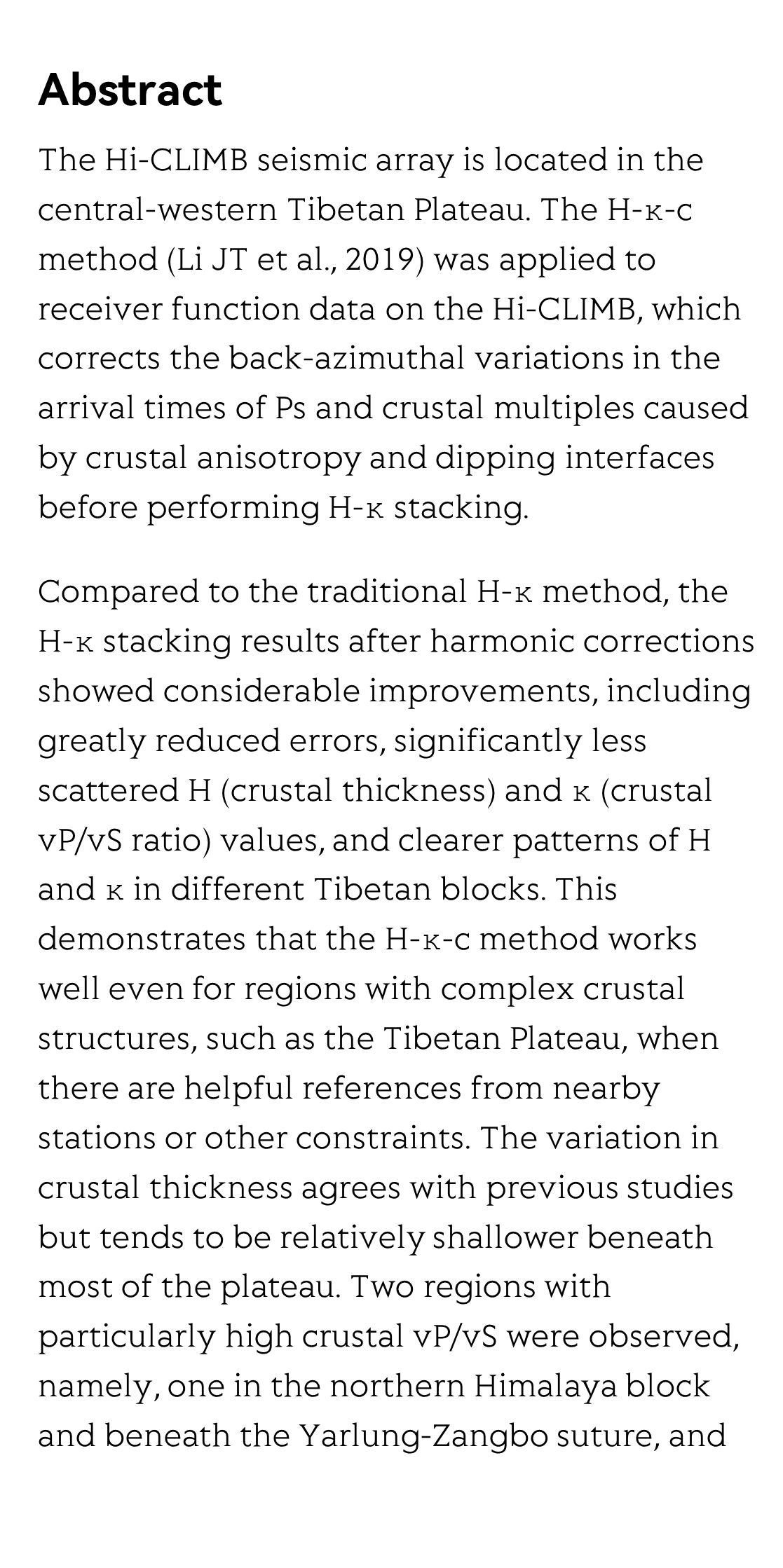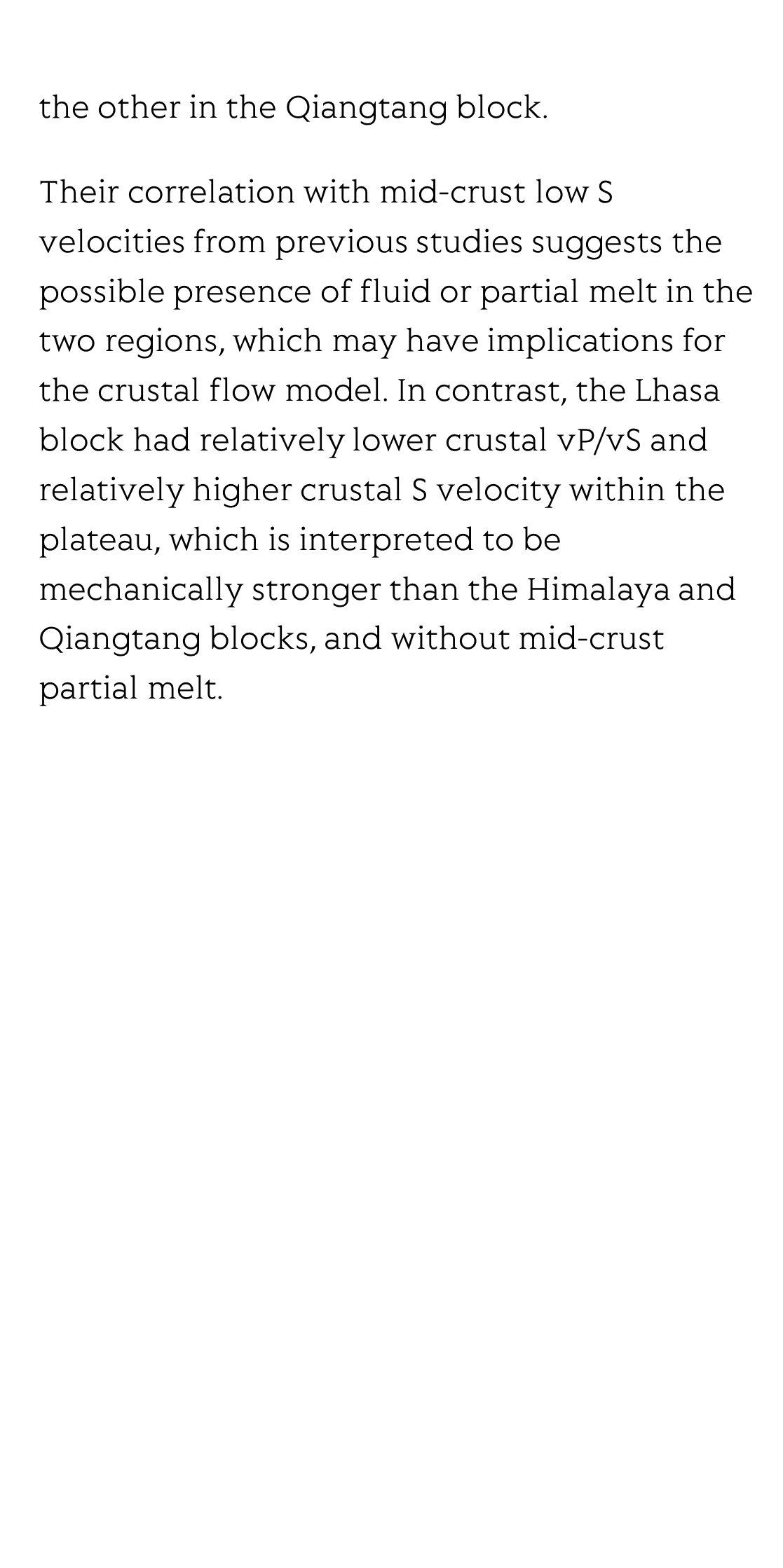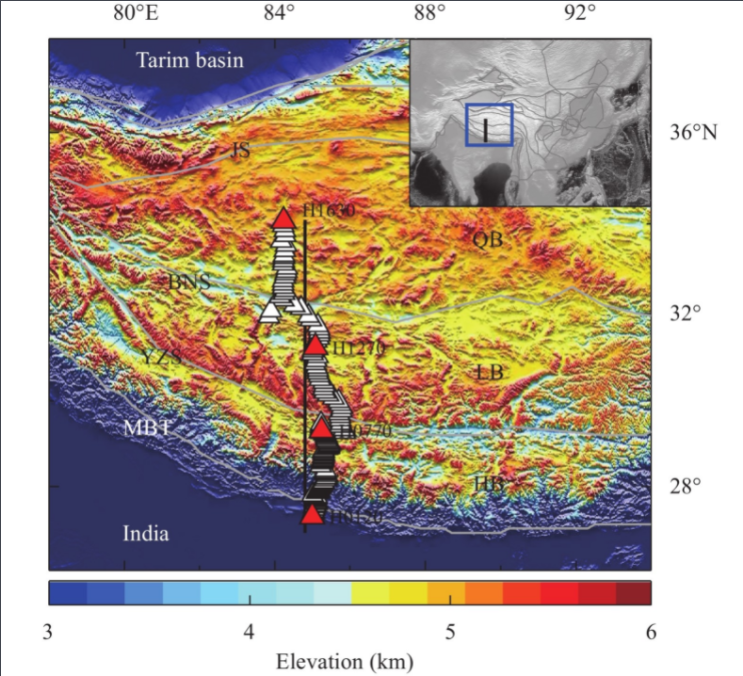(Peer-Reviewed) Crustal structure beneath the Hi-CLIMB seismic array in the central-western Tibetan Plateau from the improved H-κ-c method
Jiangtao Li 李江涛 ¹, Xiaodong Song 宋晓东 ²
¹ Department of Geophysics, School of Geodesy and Geomatics, Wuhan University, Wuhan 430079, China
中国 武汉 武汉大学测绘学院 地球物理系
² Institute of Theoretical and Applied Geophysics, School of Earth and Space Sciences, Peking University, Beijing 100871, China
中国 北京 北京大学地球与空间科学学院 理论与应用地球物理研究所
Abstract
The Hi-CLIMB seismic array is located in the central-western Tibetan Plateau. The H-κ-c method (Li JT et al., 2019) was applied to receiver function data on the Hi-CLIMB, which corrects the back-azimuthal variations in the arrival times of Ps and crustal multiples caused by crustal anisotropy and dipping interfaces before performing H-κ stacking.
Compared to the traditional H-κ method, the H-κ stacking results after harmonic corrections showed considerable improvements, including greatly reduced errors, significantly less scattered H (crustal thickness) and κ (crustal vP/vS ratio) values, and clearer patterns of H and κ in different Tibetan blocks. This demonstrates that the H-κ-c method works well even for regions with complex crustal structures, such as the Tibetan Plateau, when there are helpful references from nearby stations or other constraints. The variation in crustal thickness agrees with previous studies but tends to be relatively shallower beneath most of the plateau. Two regions with particularly high crustal vP/vS were observed, namely, one in the northern Himalaya block and beneath the Yarlung-Zangbo suture, and the other in the Qiangtang block.
Their correlation with mid-crust low S velocities from previous studies suggests the possible presence of fluid or partial melt in the two regions, which may have implications for the crustal flow model. In contrast, the Lhasa block had relatively lower crustal vP/vS and relatively higher crustal S velocity within the plateau, which is interpreted to be mechanically stronger than the Himalaya and Qiangtang blocks, and without mid-crust partial melt.
Flicker minimization in power-saving displays enabled by measurement of difference in flexoelectric coefficients and displacement-current in positive dielectric anisotropy liquid crystals
Junho Jung, HaYoung Jung, GyuRi Choi, HanByeol Park, Sun-Mi Park, Ki-Sun Kwon, Heui-Seok Jin, Dong-Jin Lee, Hoon Jeong, JeongKi Park, Byeong Koo Kim, Seung Hee Lee, MinSu Kim
Opto-Electronic Advances
2025-09-25
Dual-frequency angular-multiplexed fringe projection profilometry with deep learning: breaking hardware limits for ultra-high-speed 3D imaging
Wenwu Chen, Yifan Liu, Shijie Feng, Wei Yin, Jiaming Qian, Yixuan Li, Hang Zhang, Maciej Trusiak, Malgorzata Kujawinska, Qian Chen, Chao Zuo
Opto-Electronic Advances
2025-09-25







